- News
- Reviews
- Bikes
- Accessories
- Accessories - misc
- Computer mounts
- Bags
- Bar ends
- Bike bags & cases
- Bottle cages
- Bottles
- Cameras
- Car racks
- Child seats
- Computers
- Glasses
- GPS units
- Helmets
- Lights - front
- Lights - rear
- Lights - sets
- Locks
- Mirrors
- Mudguards
- Racks
- Pumps & CO2 inflators
- Puncture kits
- Reflectives
- Smart watches
- Stands and racks
- Trailers
- Clothing
- Components
- Bar tape & grips
- Bottom brackets
- Brake & gear cables
- Brake & STI levers
- Brake pads & spares
- Brakes
- Cassettes & freewheels
- Chains
- Chainsets & chainrings
- Derailleurs - front
- Derailleurs - rear
- Forks
- Gear levers & shifters
- Groupsets
- Handlebars & extensions
- Headsets
- Hubs
- Inner tubes
- Pedals
- Quick releases & skewers
- Saddles
- Seatposts
- Stems
- Wheels
- Tyres
- Health, fitness and nutrition
- Tools and workshop
- Miscellaneous
- Cross country mountain bikes
- Tubeless valves
- Buyers Guides
- Features
- Forum
- Recommends
- Podcast
review
£775.00
VERDICT:
Merida's Speeder 200 is a lovely bike – great fun, versatile, practical and with predominantly good components
Great all-round ride
Good spec for the money
Excellent hydraulic braking
The tyres and wet roads don't form a confidence-inspiring combination
No thru-axles
Weight:
10,570g
Contact:
At road.cc every product is thoroughly tested for as long as it takes to get a proper insight into how well it works. Our reviewers are experienced cyclists that we trust to be objective. While we strive to ensure that opinions expressed are backed up by facts, reviews are by their nature an informed opinion, not a definitive verdict. We don't intentionally try to break anything (except locks) but we do try to look for weak points in any design. The overall score is not just an average of the other scores: it reflects both a product's function and value – with value determined by how a product compares with items of similar spec, quality, and price.
What the road.cc scores meanGood scores are more common than bad, because fortunately good products are more common than bad.
- Exceptional
- Excellent
- Very Good
- Good
- Quite good
- Average
- Not so good
- Poor
- Bad
- Appalling
The 2021 Merida Speeder 200 is marketed as a flat-barred road bike that's claimed to be both sporty and comfortable. It comes with a raft of bang-up-to-date features including comfort-maximising 32mm tyres (and room for even wider rubber) and high-quality hydraulic disc brakes. The combination of the stiff and well-finished aluminium frame and tapered carbon fork offers a dynamic, controlled ride that's equally at home on fleet-footed fitness rides and urban and suburban commutes.
As both a fitness rider and long-distance commuter – or, more accurately, a former long-distance commuter – I tried out this Speeder on a variety of short and longer rides, in flat shoes and clipped in, and it proved equally adept in both these environments, tackling my local hills confidently both ascending and descending.
> Find your nearest dealer here
It might weigh in north of 10kg but that does nothing to dent the lively quality of the Speeder's ride, apart from on the steepest hills where gravity is working against you and on initial acceleration. If you want it for hard training sessions you can get out of the saddle and crank it up.
Admittedly, you can't get down low in an aero tuck like you can on a bike with drops, but the stiff frame rewards your pedalling efforts impressively. This makes the Speeder 200 a more-than-decent training machine with a low-enough bottom gear for climbing most hills in the saddle and enough stiffness when you need to stand up and dance à la Alberto Contador.
> Buyer’s Guide: 7 of the best new-generation hybrids
If anything, this Speeder is an even more impressive descender than it is climber. Again, you can't lean it into corners with the same aggression as you can a bike with drops but you can still hit sweeping bends at 30mph or more with pinpoint steering accuracy from the stiff frameset and enjoy perfectly controlled stopping from the hydraulic brakes when you need it.
At slower speeds control is excellent, making it a good choice for urban commuting and longer rides when comfort is more important than speed. It'll take you nimbly through low-speed city traffic, but hit the bike paths and open road and you can spin along easily and freely – and comfortably – at whatever speed you choose.
Frame and fork
There are no real surprises when it comes to the Speeder 200's frameset. The neatly finished 'golden red' and black (huh? golden?) is made from 6066 aluminium and the tapered fork is carbon.
Unlike some similar bikes around this price, such as Specialized's Sirrus 3.0 or the Giant Fastroad SL3, Merida has stuck with quick-release axles for both frame and fork. It may look a little old-school these days, but wheel changes were quick and easy and there was no obvious reduction in braking performance even when trying to induce brake rub.
The Speeder comes in six sizes, the same as Specialized's Sirrus, and with the range designed for riders from 5ft to 6ft 6in, it should be easy to find the right one.
All the cabling is neatly routed through the frame. Ignore the flat bar and the Speeder could easily be mistaken for a road bike, with its large diameter down tube (for maximum efficiency, y'know), flattened top tube and slimline and slightly flattened seatstays for maximising rear-end comfort.
For a bike that's very well suited to commuting, thanks to its combination of speed, toughness and comfort, the absence of rear rack mounts at the top of the seatstays is a little surprising. My guess is that this is down to the flattened profile of the seatstays, which would make drilling them for bosses problematic.
It's not a game changer as you could use P-clips for a four-point fixing, in conjunction with the seatstays' lower mudguard-cum-rack threads.
And today's cyclist has more choice than ever when it comes to bag-carrying options than ever, including the Tubus Fly rack with its three-point fitting and numerous seatpost-mounted baggage options. I'd still prefer rear rack bosses, as fitted to the Sirrus and Boardman's similar Hyb 8.8 among others, but this is about my only real criticism of the Speeder's frameset.
Groupset
Shimano's 9-speed Sora comprises most of the Merida's drivetrain and gearing – providing quick and accurate shifting. Sora is good to see on a bike at this price and is at the upper end of what you might expect. For example, you'd need to pay £850 to get Sora on Specialized's broadly similar 2020 Sirrus 3.0, or £949 for the 2021 model.
The gearing is pretty much what you'd expect on a flat-barred bike at this price, pairing an FSA 50/34 compact chainset and a wide-ranging Shimano cassette. That said, I don't feel that Merida has gone quite as far as it could when it comes to getting the smallest bottom gear, sticking with a 32-tooth biggest sprocket. My commute from the centre of Bath takes in a short section at 11 per cent – while different routes home reach 25 cent if I choose to tackle them. I don't!
Merida could have gone the whole hog with an 11-34 cassette, dropping the bottom gear a couple of inches or so. Not much, but every little helps on the steeper climbs. Alternatively, the last few years have also seen the introduction of sub-compact chainsets with 48/32 or even 46/30 pairings, both of which would lower the bottom bailout gear.
Or, as Boardman has done with its Hyb 8.8, Merida could have gone down the single-chainring route. The 8.8 pairs a 44T chainring with a 10-speed 11-46 cassette, offering a bottom gear nearly the equivalent to a 34/34 pairing, though this comes at the expense of a lower top gear. That said, the Speeder's gear range is a massive improvement on the gearing I grew up with, and will be sufficient for virtually all situations.
The chainset and cartridge bottom bracket are both from FSA and are pretty standard at this price. Both are fine and you're likely to have little issue with either of them.
The braking is an absolute highlight of the Speeder. If you dug an old modestly priced hybrid out of your shed or garage for riding during the first lockdown, the difference between that bike's braking and this is greater than that between white porous calcium and a coagulated dairy product.
If you've yet to experience the light single-finger action, unparallelled stopping power and pinpoint control of hydraulic disc brakes, the treat awaits you.
It's good to see that the trickle-down effect has brought hydraulics to even quite modestly priced bikes such as the Speeder. Its Shimano MT200 hydraulic brakes and 160mm rotors are absolutely great. Whatever adjective you choose – excellent, impressive, faultless – they're all accurate, and the brakes really do add to the enjoyment of riding the Speeder. On fast urban downhills you can easily keep up with traffic at 30mph secure in the knowledge that the brakes will stop you sharply and safely without the need to grab a handful of lever. In pouring rain you do get a mild squeal initially but after that they're church-mouse quiet. The only potential downside, in the wet anyway, is the performance of the tyres.
Wheels and tyres
The Speeder's own-brand wheels are paired with 32mm Maxxis Detonator tyres, which are about the only thing I'd change – at this time of year anyway. The tyres were fine on dry days, their extra width compared with skinny road rubber adding extra comfort and I've found them pretty durable on previous test bikes, but come the wet their grip is less than convincing and you're really not going to lean aggressively into corners on these. Compacted autumn leaves also proved an unwelcome companion, especially on out of the saddle climbs.
The wheels are one of the few components where Merida appears to have cut costs. They appear solidly made and the budget Joytech hubs run smoothly enough, but they're not what you'd call light. The paired spokes offer a distinctive look if little in the way of mechanical advantage, but the combined weight of the 28-spoked front and 32-spoked rear is a shade under 4kg (this is the complete weight including 160mm rotors, quick-release levers and cassette).
You don't really feel this weight until you hit the climbs, where they will inevitably hold you back a little. The 17mm-wide inner rim allows you to fit tyres up to 37mm wide, which will give you a wide choice of rubber that will even allow you to tackle gravel and not-too-gnarly singletrack if you want to broaden your horizons.
I wouldn't be tempted to change the wheels until they've lived their life, but they, and especially the tyres, would be the obvious place to upgrade the Speeder 200 a little further down the line.
Finishing kit
The Merida's finishing kit is typical of that you'll find on a flat-barred road bike at this price – it's all decent own-brand aluminium componentry. None of it stands out, none of it will let you down. Just what you'd expect.
The alloy handlebar is 600mm wide, which is wide enough for good control on hills without being too wide for weaving your way through city traffic. I did have one very small issue with the bar, and that is that its diameter narrows quite rapidly away from the stem, which meant my Hide My Bell/Garmin mount had a tendency to slip sideways unless you really cranked up the bolt tightness. A small matter.
The own-brand Merida rubber grips were fine for comfort, but if I was keeping the Merida I'd fit a pair of bar ends such as one of Ergon's GP series, as I prefer the extra handholds and versatility they offer, especially when climbing or on longer rides. Bar ends have largely fallen out of fashion off road, but they're easy to fit and I find them a real boon.
One unusual feature is that Merida has stuck with the oversize 30.9mm diameter for its seatpost, rather than the more common 27.2mm. With a stiff and compact aluminium frame I was concerned that this might prove an uncomfortable pairing, but I needn't have worried.
Some of that comfort is down to Merida's own-brand Comp SL saddle. This is used for all six models in the Speeder range from the £659 Speeder 100 to the £1,400 Speeder 900. And with good reason. Whereas I find some saddles on flat-barred bikes – even more so on e-bikes – over padded, the 282mm long, 143mm wide Comp SL is well shaped and has just the right amount of 'squishiness' for a lifelong roadie. The saddle also features Merida's VL mount, which allows you to attach a range of accessories including a multi-tool and saddlebag.
Value and conclusion
I liked Merida's Speeder 200. A lot. It's a high-quality road bike – albeit it one with a flat handlebar rather than drops. It doesn't have quite the value of the Triban Riverside, but then again, few bikes can compete with Decathlon for value.
It's around the same price as Boardman's Hyb 8.8, which also looks a good buy, and is a similar cost to Giant's Sora-equipped Fastroad SL3, but it's a fair bit less than Specialized's nearest equivalent, the Sirrus 3.0.
> Buyer’s Guide: 11 of the best hybrid bikes
The components are fine for the money, with Shimano Sora shifting sweetly and its disc brakes powerful and controlled. I think the gold/red and black looks good too. Okay, the wheels are basic and not that light, and the tyres aren't great in the wet, but about the only other thing I'd criticise the Speeder for are the lack of rear rack mounts on what would make a great commuter bike. I found it great for blasting along the local surfaced Sustrans routes, mixing it with occasional sprints on my interval-training days – where it proved easily stiff enough (for my modest efforts anyway!).
It handles impeccably on descents and proved an enjoyable flat-barred flyer for fitness, commuting and everyday riding, with very few cost-cutting kit choices. Very good comfort, decently nippy apart from on the steepest climbs, good gearing – though it could go sightly lower – and first-rate braking.
Verdict
Merida's Speeder 200 is a lovely bike – great fun, versatile, practical and with predominantly good components
road.cc test report
Make and model: Merida Speeder 200
Size tested: S/M
About the bike
List the components used to build up the bike.
Merida lists:
Frame Lightweight 6066 triple-butted and hydroformed aluminium frame with smooth welding and internal cable routing. Complete with mudguard and rack mounts
Fork Speeder CF2, tapered carbon
Front derailleur Shimano Sora
Rear derailleur Shimano Sora
Levers Shimano SL-R3000
Chainset FSA Tempo 50/34, 170mm
Chain KMC M99
Cassette Shimano CS-HG200 11-32, 9-speed
Bottom bracket FSA TH-7420ST, cartridge bearing
Brakes Shimano BR-MT200 hydraulic disc, 160mm rotors
Hubs Joytech D71SBT-SC-SL Center-lock front hub with quick-release lever; Shimano TX505 Center-lock rear hub with quick-release lever
Rims Merida Comp SL aluminium, 17mm inner rim width, 22mm deep
Tyres 32mm Maxxis Detonator
Stem Merida Comp CC aluminium, 100mm 6-degree rise
Handlebar Merida Comp TK aluminium 600mm
Grips Merida
Seatpost Merida Comp CC aluminium, 30.9mm, 12mm setback
Saddle Merida Comp SL
Tell us what the bike is for and who it's aimed at. What do the manufacturers say about it? How does that compare to your own feelings about the bike?
Merida describes the Speeder range as having sporty yet comfort-inspired geometry, a control-enhancing flat handlebar and powerful disc brakes... making the Speeder ideal for fast commuting or fitness riders. Wider tyres and more tyre clearance underline the comfort element even further.
Having spent several weeks on the Speeder 200 tackling all sorts of rides in some, er, pretty variable riding conditions, I'd say Merida is pretty much spot on. It balances decent speed for the fast rider with good comfort for the commuter and fitness rider.
Where does this model sit in the range? Tell us briefly about the cheaper options and the more expensive options
There are six bikes in Merida's 2021 Speeder range and the 200 sits one above the £675 Shimano Acera-equipped Speeder 100. The 300 comes with 10-speed Tiagra and Tektro's M275 brakes and the range tops out with the flashy £1,400 Speeder 900, complete with Shimano Ultegra and MT-500 brakes. All the bikes come with the same Maxxis 32mm Detonator tyres, though the top two models – the 900 and the Shimano 105-equipped 500 – have upgraded Merida Expert CC rims.
Frame and fork
Overall rating for frame and fork
9/10
Tell us about the build quality and finish of the frame and fork?
Well-finished smooth-welded aluminium frame and tapered carbon fork with tidy internal cable routing. It lacks only rear rack mounts and thru-axles.
Tell us about the materials used in the frame and fork?
The frame is made from triple-butted hydroformed 6066 aluminium, while the fork is carbon fibre.
Tell us about the geometry of the frame and fork?
The Speeder has a road bike-inspired longish top-tube, but this is balanced with a long metre-plus wheelbase for stability. The slackish c71-degree head tube angle is typical for flat-barred road bikes, while the seat tube is a more aggressive 73 degrees throughout the size range.
How was the bike in terms of height and reach? How did it compare to other bikes of the same stated size?
The sizing felt very good to me though I may have gone for a slightly longer stem. And while stack is similar to that of Specialized's Sirrus with the same length top-tube, the Merida's reach is 23mm higher.
Riding the bike
Was the bike comfortable to ride? Tell us how you felt about the ride quality.
I had no problems at all with comfort even with its stiff frame and oversize seatpost. Factors that contribute to the comfort include the non-stretched-out 32mm tyres and a saddle so good that Merida uses it for the whole Speeder range.
Did the bike feel stiff in the right places? Did any part of the bike feel too stiff or too flexible?
There was more than enough stiffness without ever feeling uncomfortable. Even under high-torque efforts I couldn't induce any brake rub.
How did the bike transfer power? Did it feel efficient?
The oversize aluminium frame felt like it transferred power efficiently at all times.
Was there any toe-clip overlap with the front wheel? If so was it a problem?
No.
How would you describe the steering? Was it lively neutral or unresponsive? On the lively and responsive side .
Tell us some more about the handling. How did the bike feel overall? Did it do particular things well or badly?
The Speeder's direct handling inspired confidence at all times. Climbing was decent, it was great in traffic and descended without any glitches.
Which components had the most effect (good or bad) on the bike's comfort? would you recommend any changes?
I got on well with the own-brand saddle and the choice of 32mm tyres is sensible for balancing plushness without inhibiting all-round performance. I'd add bar ends for extra versatility but that's a personal call.
Which components had the most effect (good or bad) on the bike's stiffness? would you recommend any changes?
The aluminium frame and carbon fork – along with the Merida saddle – offer a spot-on blend of stiffness and comfort.
Which components had the most effect (good or bad) on the bike's efficiency? would you recommend any changes?
The only components that I'd change – at least in autumn and winter – are the tyres, which are poor in the wet. The budget wheels are on the heavy side but I'd still hang on to them.
Rate the bike for efficiency of power transfer:
8/10
I couldn't fault the Merida on its power transfer.
Rate the bike for acceleration:
7/10
Acceleration is decent but the heavyweight wheels take a while to get up to speed.
Rate the bike for sprinting:
7/10
It holds its speed well but heavy wheels hold you back on the sharpest sprints.
Rate the bike for high speed stability:
9/10
First-rate stability from the stiff frame and longish wheelbase.
Rate the bike for cruising speed stability:
9/10
This was as much at home on long-distance commutes and longer, more leisurely rides as on more explosive fitness rides.
Rate the bike for low speed stability:
9/10
Excellent control and stability in urban situations.
Rate the bike for flat cornering:
8/10
Rate the bike for cornering on descents:
8/10
An absolute blast on descents – in the dry anyway – with the excellent brakes allowing you to power into corners.
Rate the bike for climbing:
7/10
Very good power transfer but on steeper climbs four kilos of wheels will make their presence felt.
The drivetrain
Rate the drivetrain for performance:
8/10
Hard to fault the Shimano/FSA combo.
Rate the drivetrain for durability:
8/10
Rate the drivetrain for weight:
7/10
Rate the drivetrain for value:
7/10
Tell us some more about the drivetrain. Anything you particularly did or didn't like? Any components which didn't work well together?
The combination of Shimano Sora and FSA Tempo is a familiar one at this price, as is the choice of a KMC chain. They all mesh together well.
Wheels and tyres
Rate the wheels for performance:
6/10
They're okay for the money but weighty and not that exciting.
Rate the wheels for durability:
7/10
They look and feel as if they're built to last.
Rate the wheels for weight:
6/10
The quite modest wheels contribute nearly 4kg to the Speeder, a considerable proportion of the bike's overall weight.
Rate the wheels for comfort:
8/10
No complaints here, with the volume provided by 32mm rubber adding a good deal of plushness.
Rate the wheels for value:
6/10
Tell us some more about the wheels.Did they work well in the conditions you encountered? Would you change the wheels? If so what for?
These are one of the weakest areas of the Speeder's overall package, which is often the case on bikes around this price. I wouldn't change the wheels until they go the way of all things, but they're adequate rather than exceptional. Later on I might consider wheels such as Fulcrum's Racing 4DBs, which are durable and may offer enough benefit to justify their cost.
Rate the tyres for performance:
6/10
Good tyres and fine on dry roads, less convincing in the wet.
Rate the tyres for durability:
7/10
Rate the tyres for comfort:
9/10
This is one of the areas where the Maxxis Detonators really deliver – no complaints here.
Rate the tyres for value:
6/10
Tell us some more about the tyres. Did they work well in the conditions you encountered? Would you change the tyres? If so what for?
In late winter-cum-early autumn riding conditions the Maxxis Detonators lacked grip, with tightly packed leaves an especially tricky proposition.
Controls
Rate the controls for performance:
8/10
Both the Shimano brake levers and gear shifters are intuitive and effective.
Rate the controls for durability:
8/10
Rate the controls for comfort:
8/10
Rate the controls for value:
8/10
Anything else you want to say about the componentry? Comment on any other components (good or bad)
The Sora, KMC and FSA drivetrain is fine but the Shimano brakes are outstanding. A decade or more ago and you'd have had rim brakes, and cable discs are seen on other similar bikes at this price. But if you ever need convincing why hydraulic disc brakes are taking over, this is it: fantastically powerful braking with very little effort from a single finger – and equally impressive control.
Your summary
Did you enjoy riding the bike? Yes
Would you consider buying the bike? Yes
Would you recommend the bike to a friend? Yes
How does the price compare to that of similar bikes in the market, including ones recently tested on road.cc?
The price compares well with similar bikes. It can't offer the value Triban does with its Riverside, but it's a similar price to Giant's Fastroad SL3 and quite a bit less than Specialized's 2021 Sirrus 3.0.
Rate the bike overall for performance:
8/10
Rate the bike overall for value:
7/10
Use this box to explain your overall score
Overall, Merida's Speeder 200 is very good. It has a fine, comfortable and efficient all-round ride, sensible own-brand components, good gearing and great brakes. Only the wheels are something of a letdown, and even they're okay.
About the tester
Age: 57
I usually ride: 2018 Giant TCR Advanced 2 with Halo Carbaura disc wheels My best bike is:
I've been riding for: Over 20 years I ride: Every day I would class myself as: Expert
I regularly do the following types of riding: time trialling, commuting, touring, sportives, general fitness riding,
Simon has been riding since he was a nipper and more seriously since his university days way back when. He has been a cycling journalist for more than two decades and reckons he has upwards of 200,000 miles in his legs. In his time he has competed (in the loosest sense of the word) in time trials, triathlons, duathlons and a lone cyclo-cross; he has been a long-distance commuter for decades – on road and canal towpath. He has also toured extensively in Laos, Cambodia, Thailand, Malaysia and has ridden 4,000km from Cairns to Melbourne in Australia, and the 700km from Picton to Dunedin in New Zealand. If his legs carry on working, he'd like to ride from Perth to Sydney...
Latest Comments
- McVittees 3 sec ago
I think the key point here is BC do a risk assessment of an event and say "there you go" and walk off. They need to provide solutions to enable...
- Gkam84 2 hours 30 min ago
I think that is why blind eyes have been turned in the UK, internationally aswell, with things like the Redhook crits, there were many licensed...
- Surreyrider 2 hours 48 min ago
You're going to be writing that a lot in the coming months and years, unfortunately for you.
- mdavidford 3 hours 39 min ago
Ahem - other esporters(?) might be rather surprised to hear that the UCI has taken over their events - I think that would be the Cycling Esports...
- Bungle_52 3 hours 48 min ago
I wonder how he got to the game?
- OldRidgeback 3 hours 50 min ago
You'd need some good wet weather gear for that ride too.
- OnYerBike 6 hours 14 min ago
It seems to me that the most likely explanation is that whoever provided that quote fails to grasp the difference between a "public right of way"...
- andystow 6 hours 21 min ago
That article is far too kind to Moses. I highly recommend reading The Death and Life of Great American Cities. Despite the title, it applies to...


































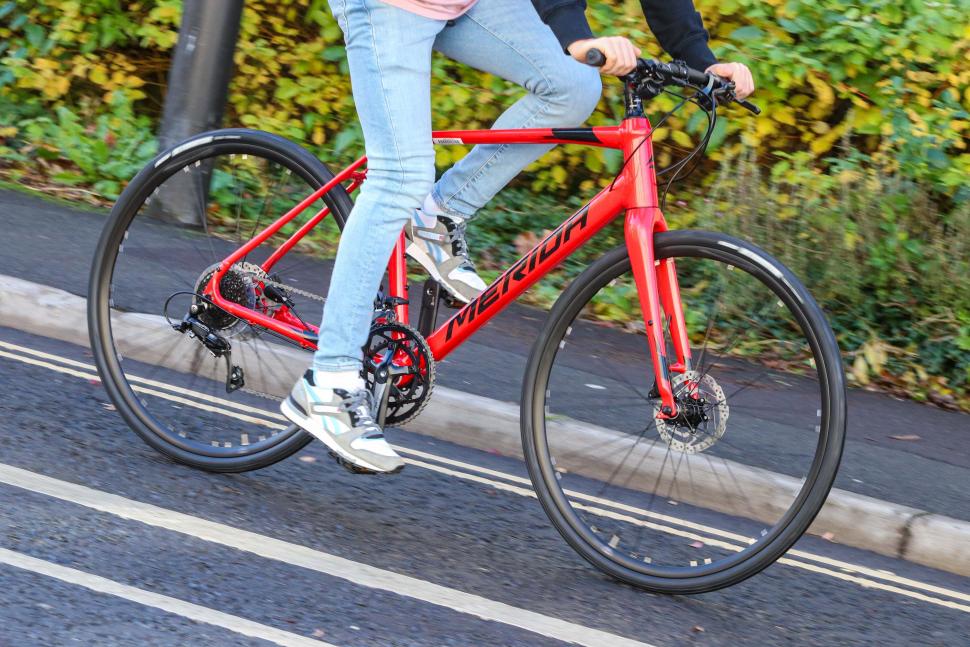


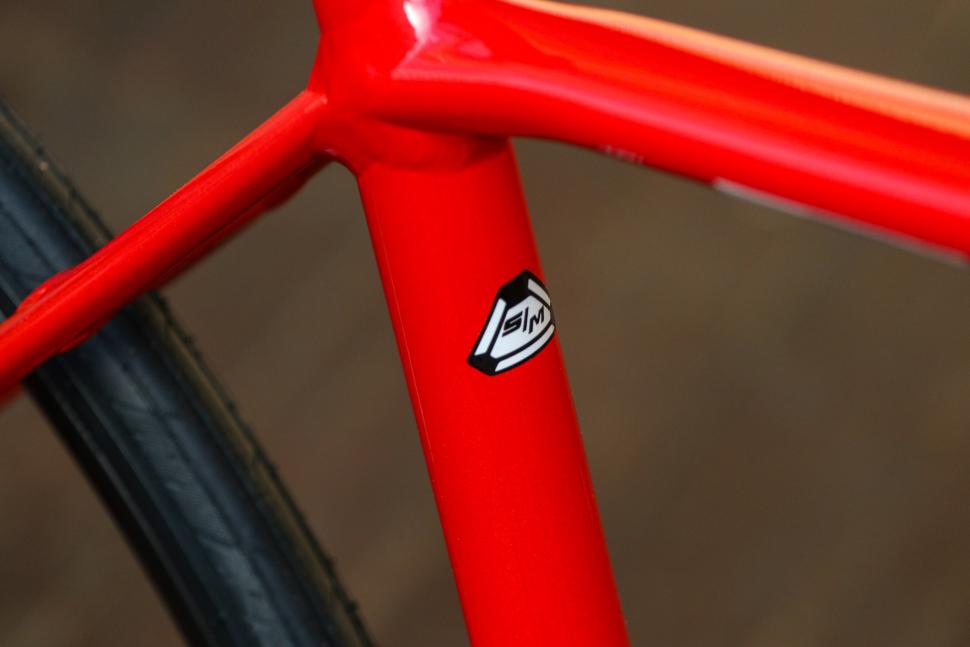



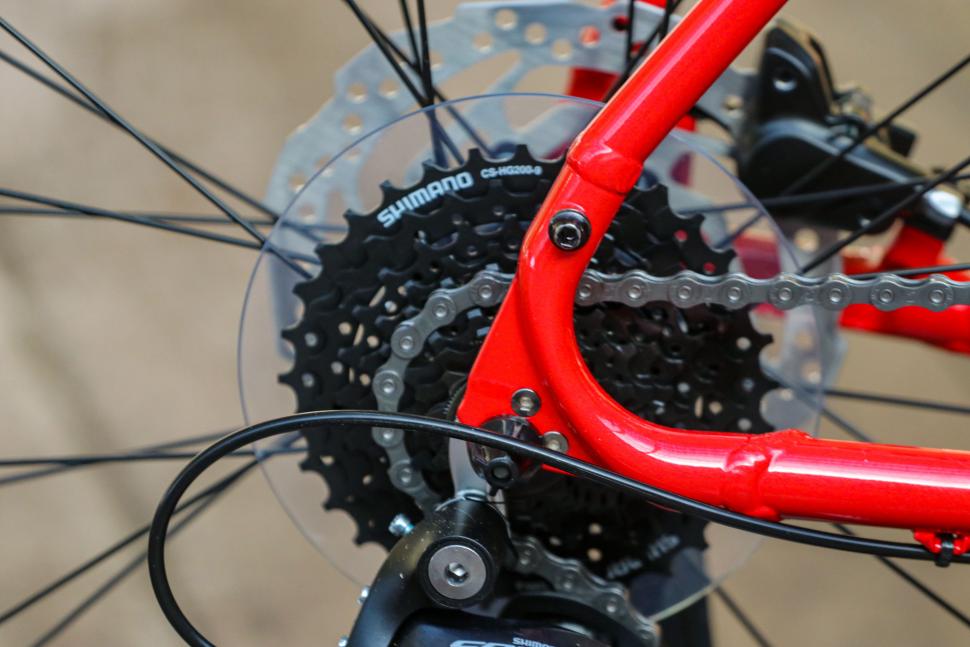

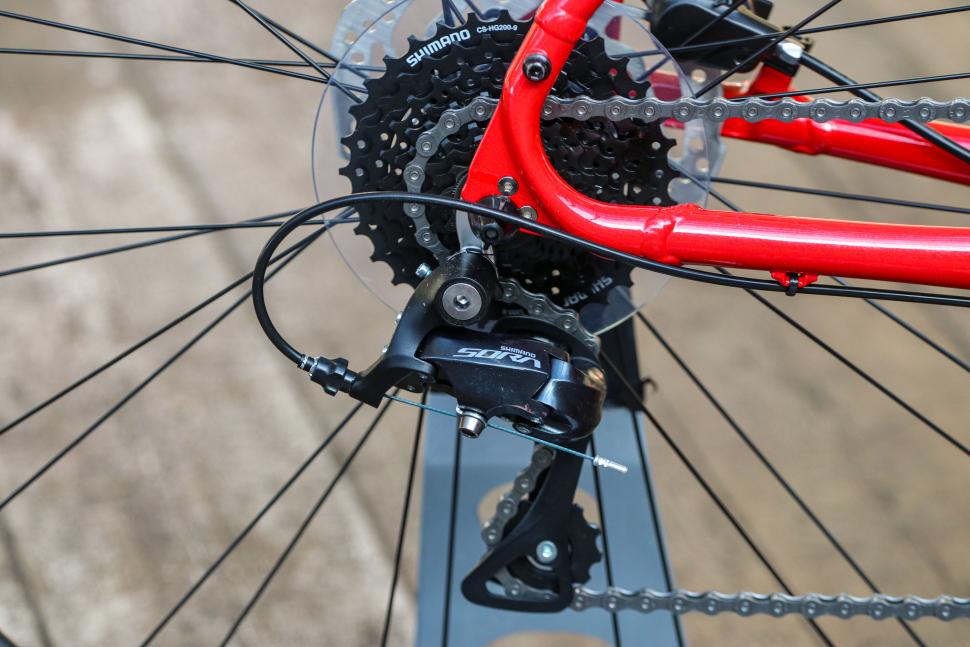
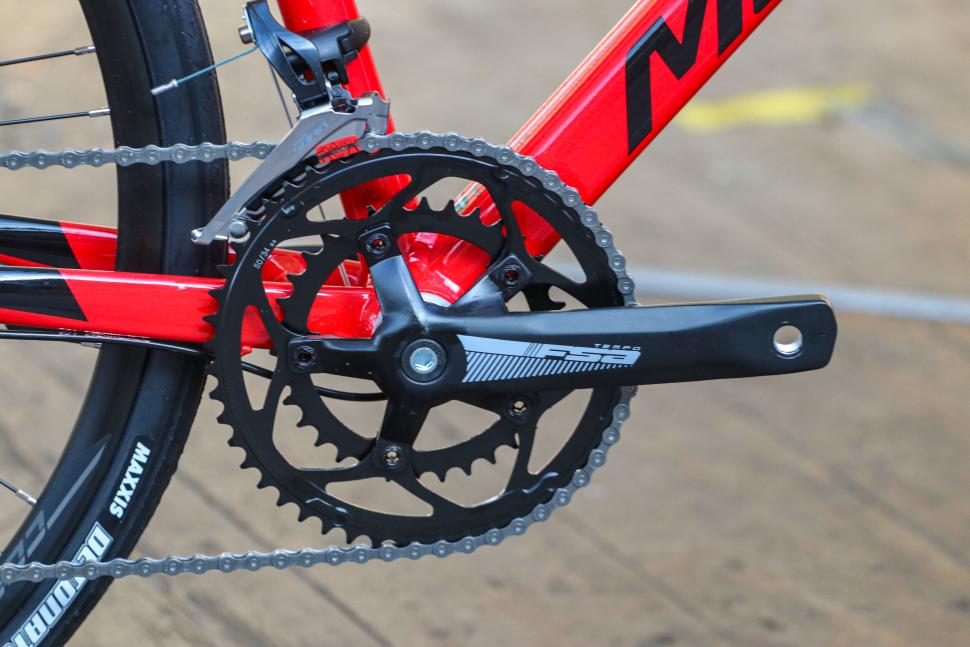
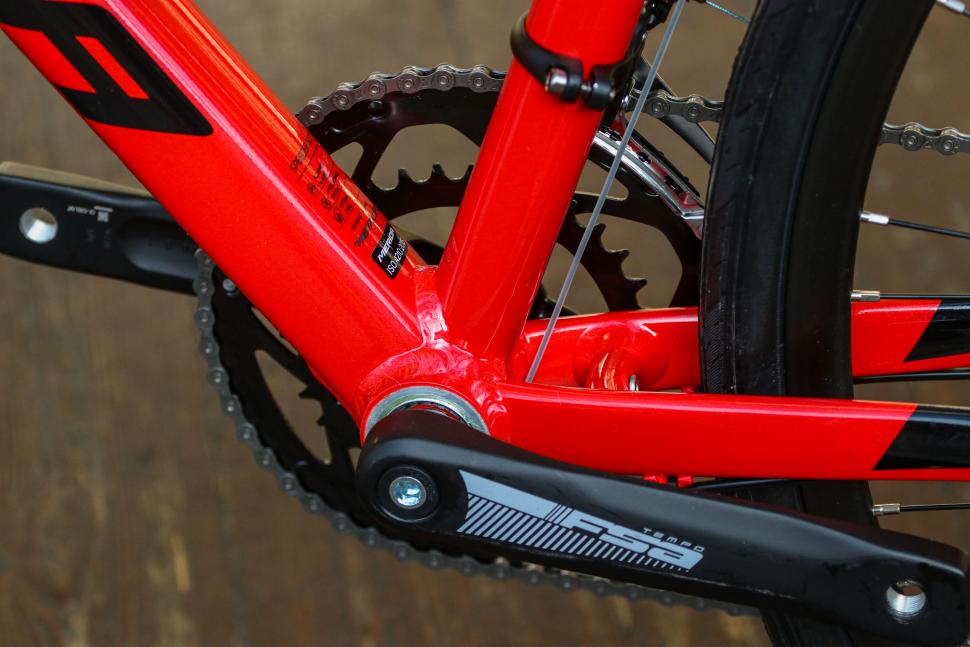


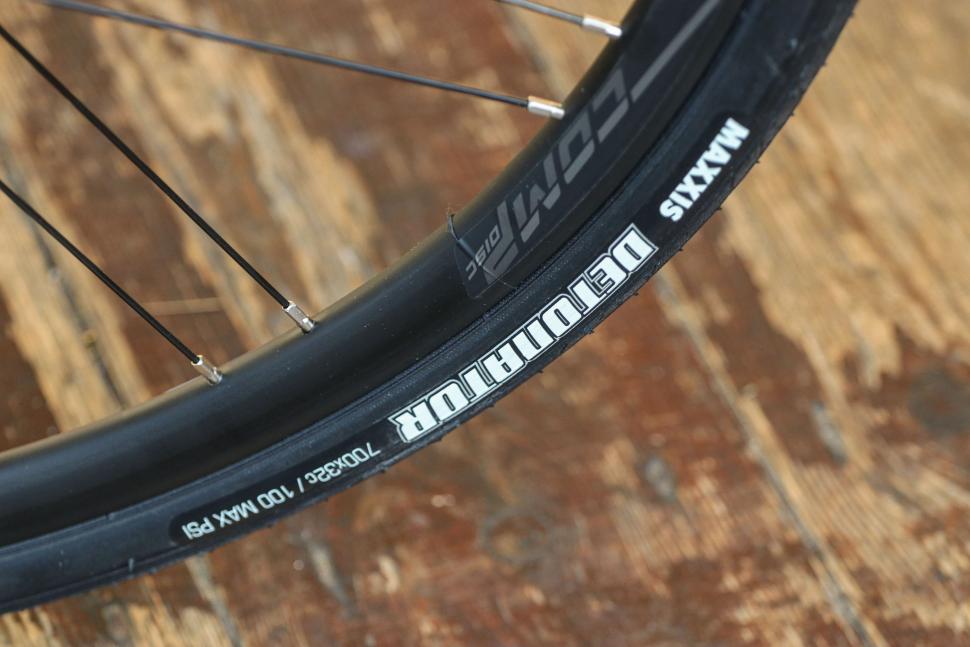
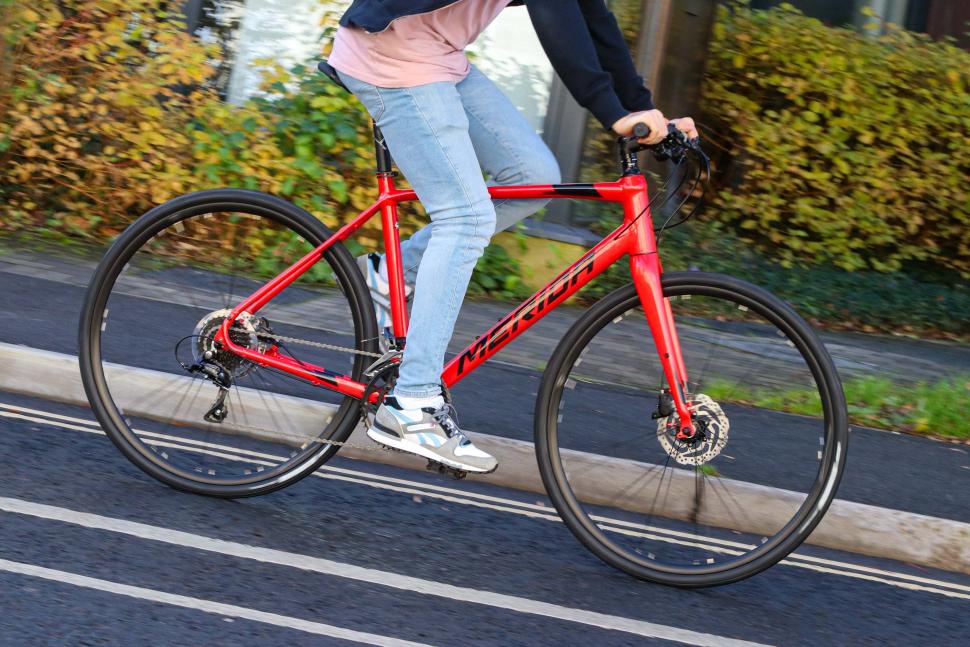
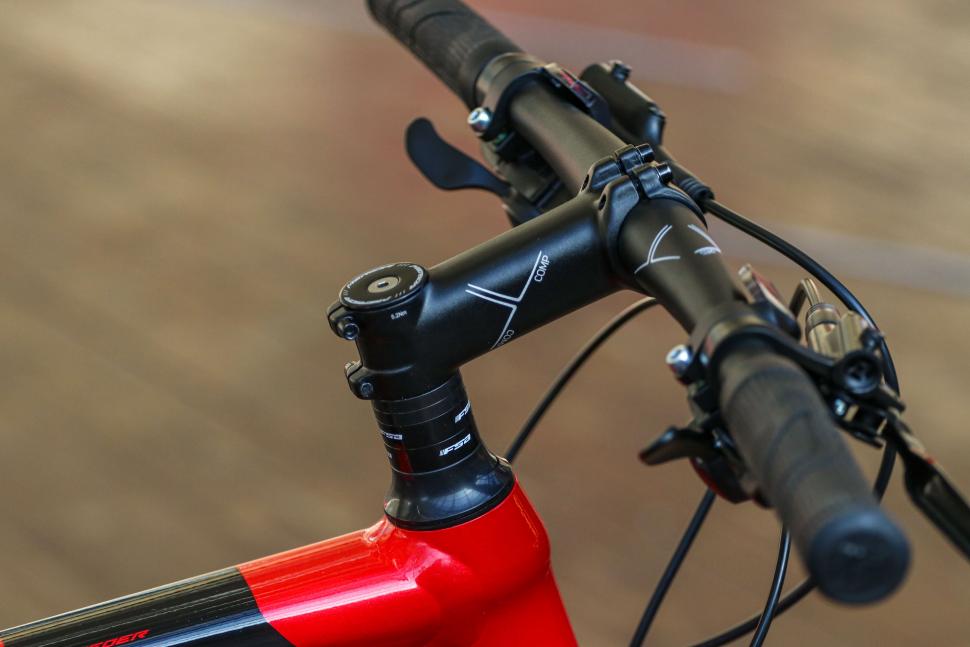
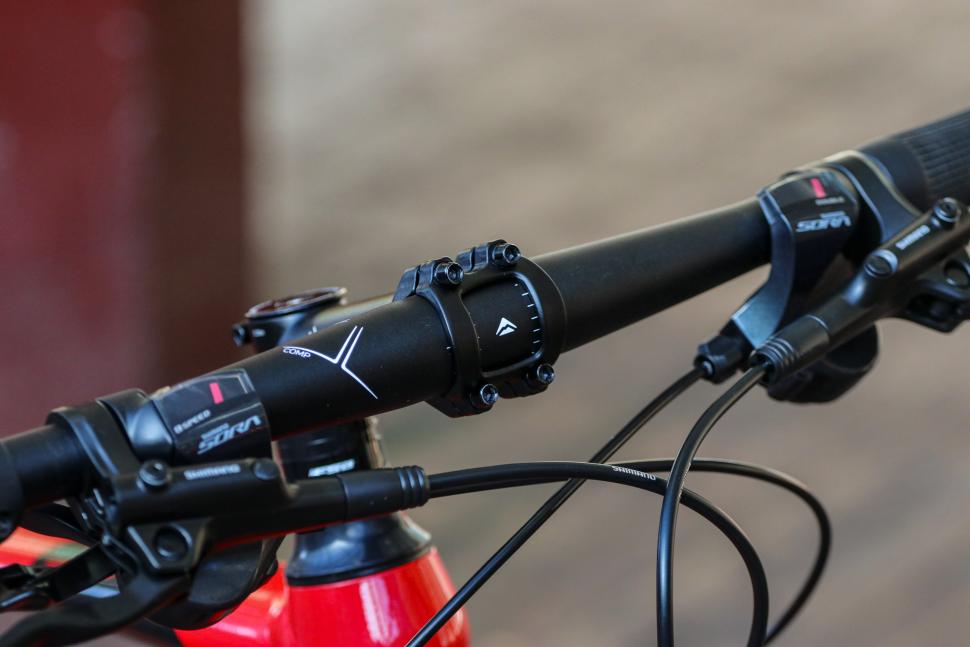
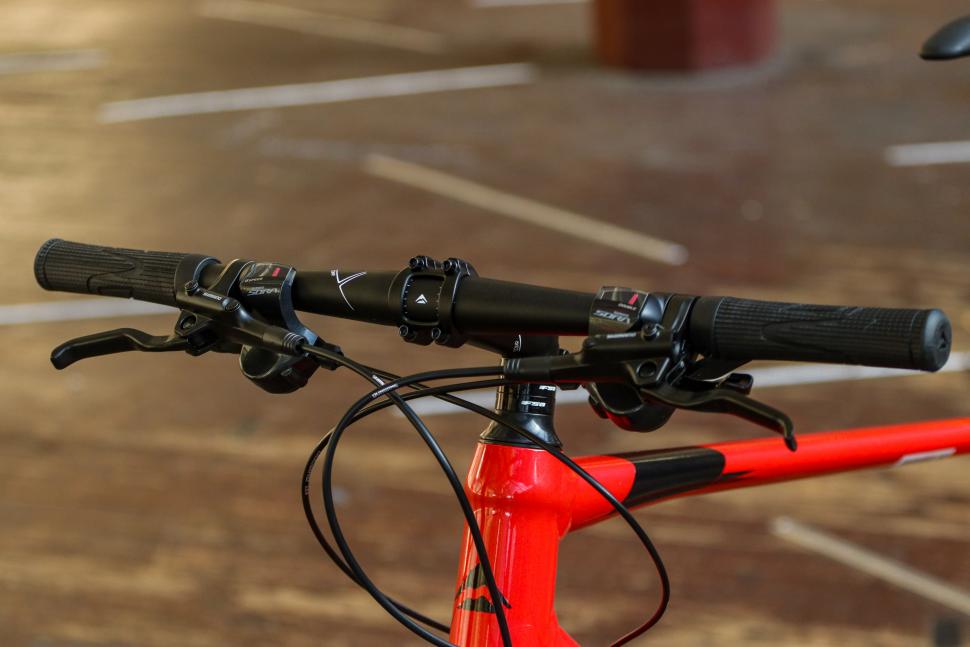
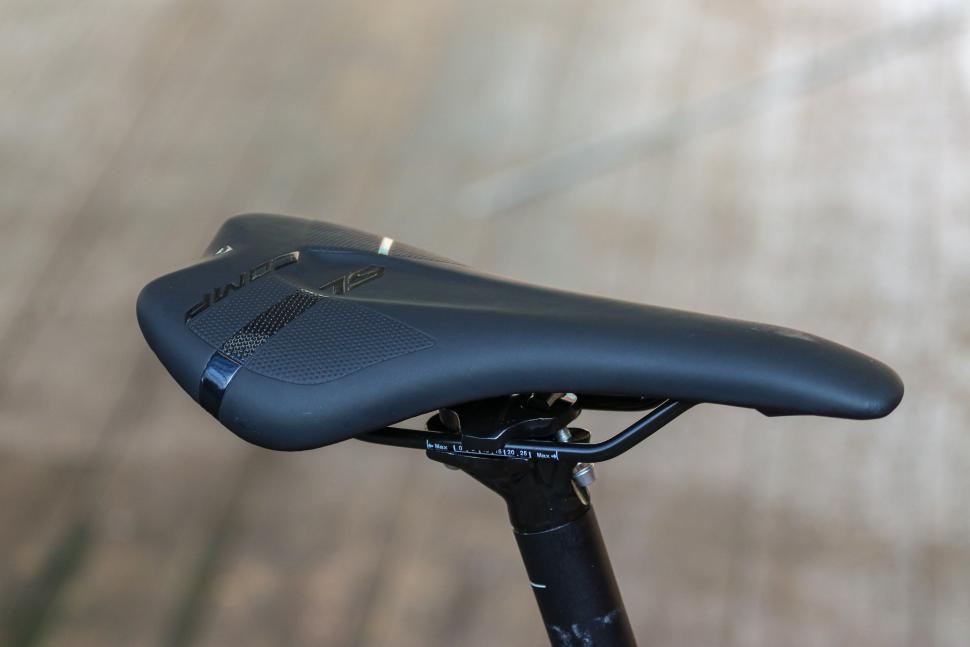
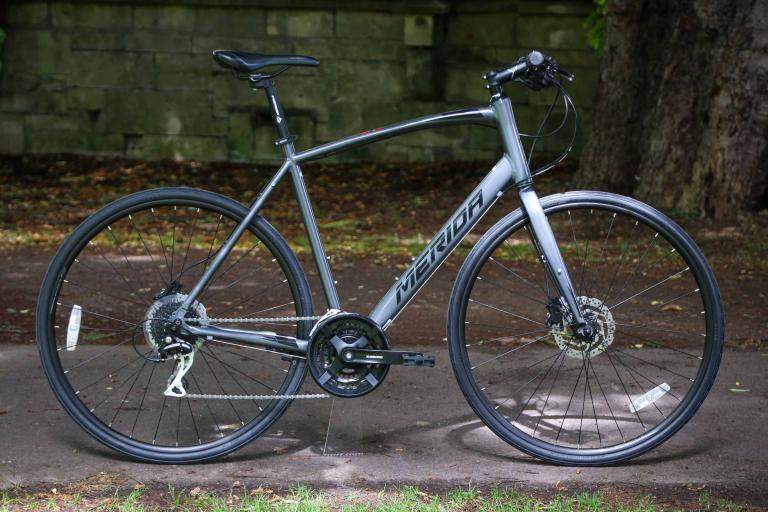
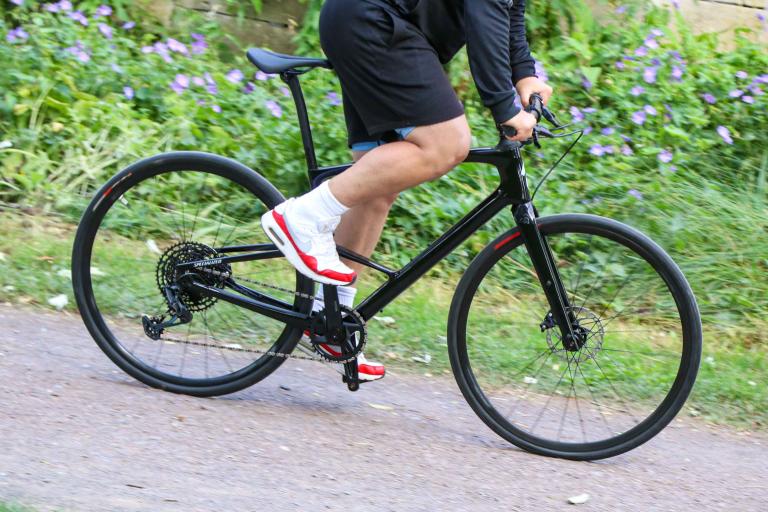
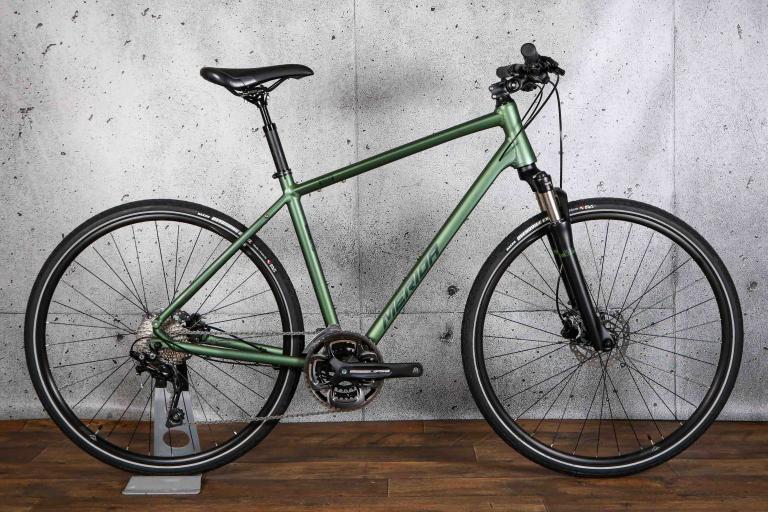
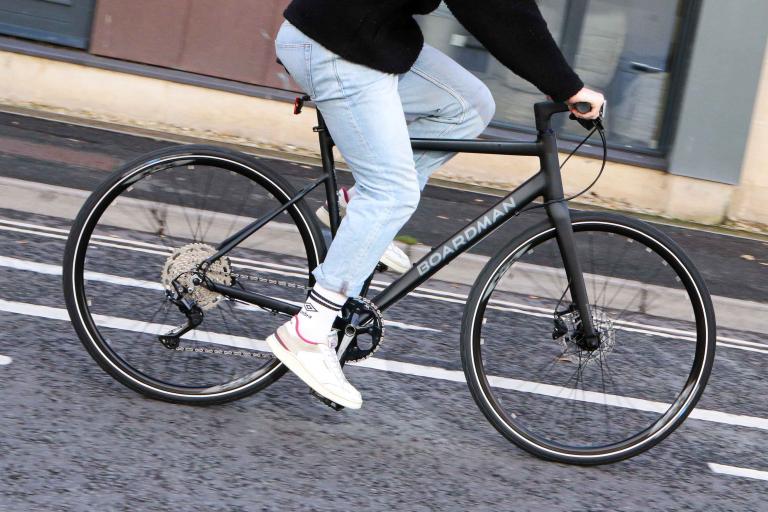
Add new comment
2 comments
I quite like the idea of bike names that rhyme with their brand. The Merida Speeder, the Giant Compliant... Er, OK, I'm struggling now.
Triban Pieman
Specialized Breathalised
Vitus Titus
Raleigh O'Malley